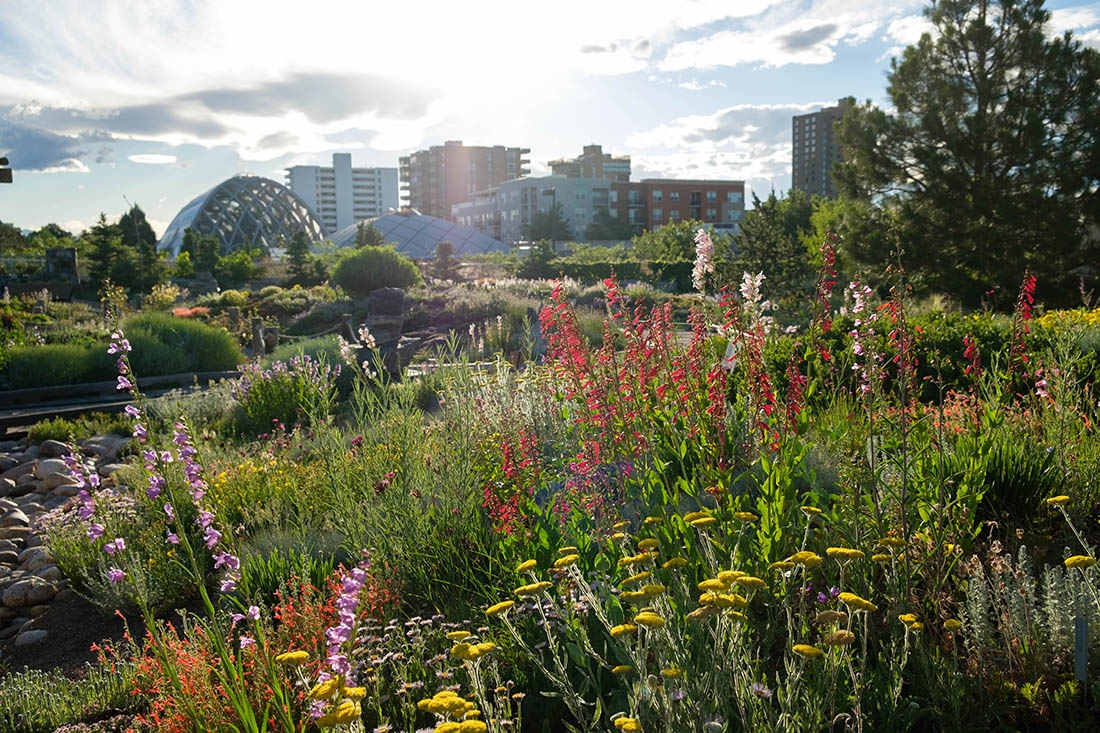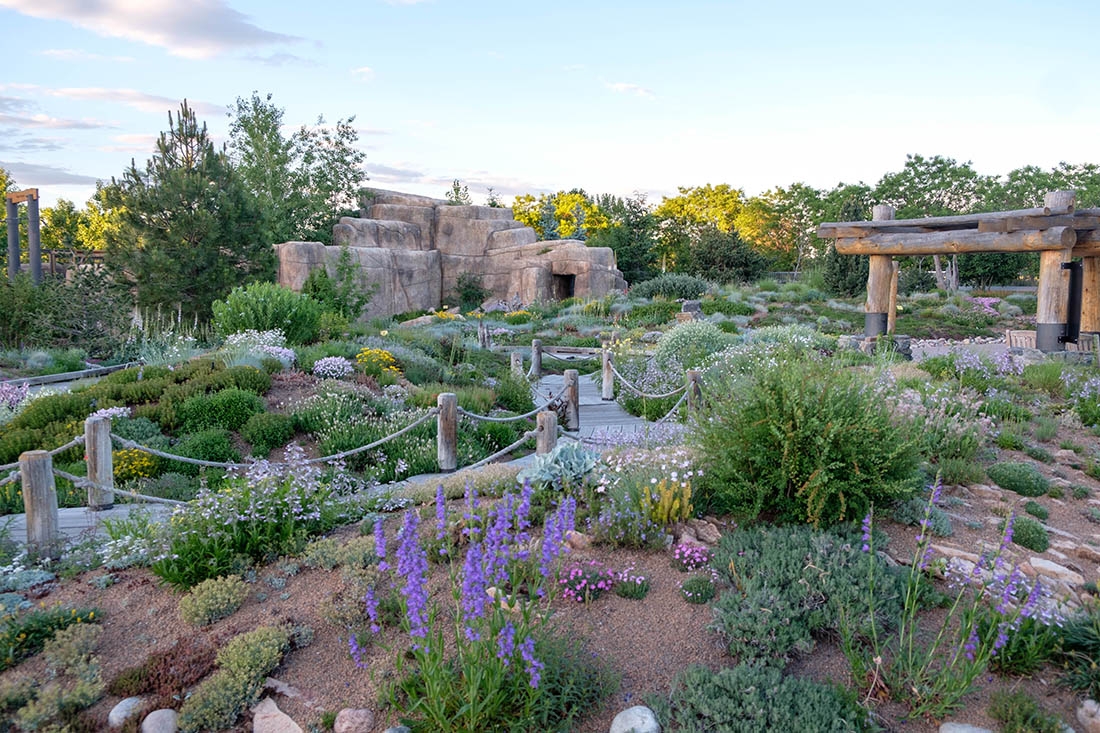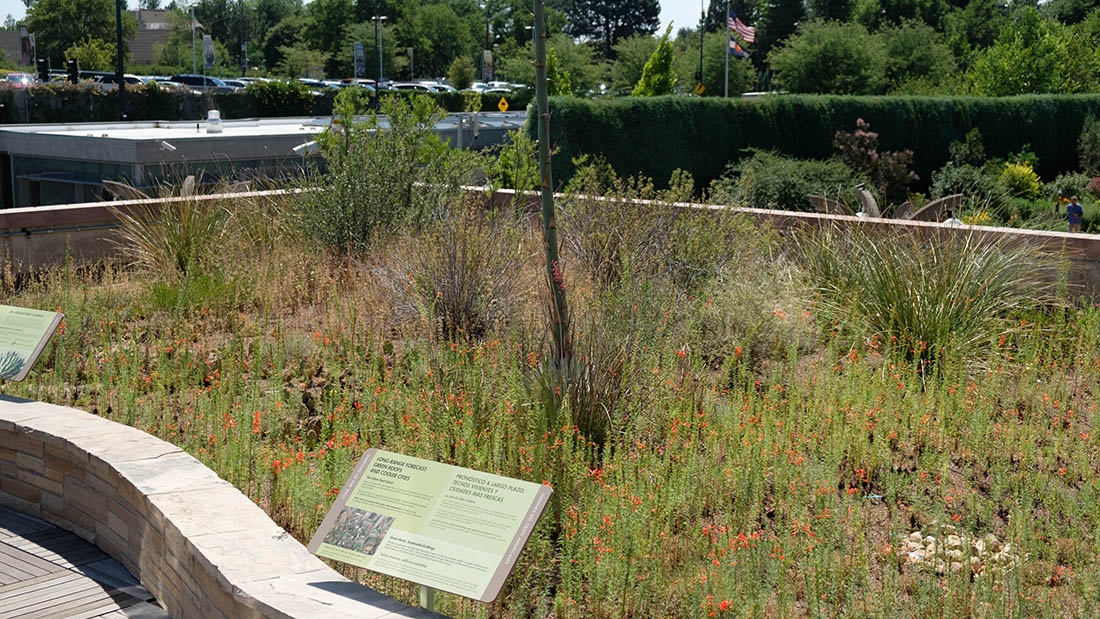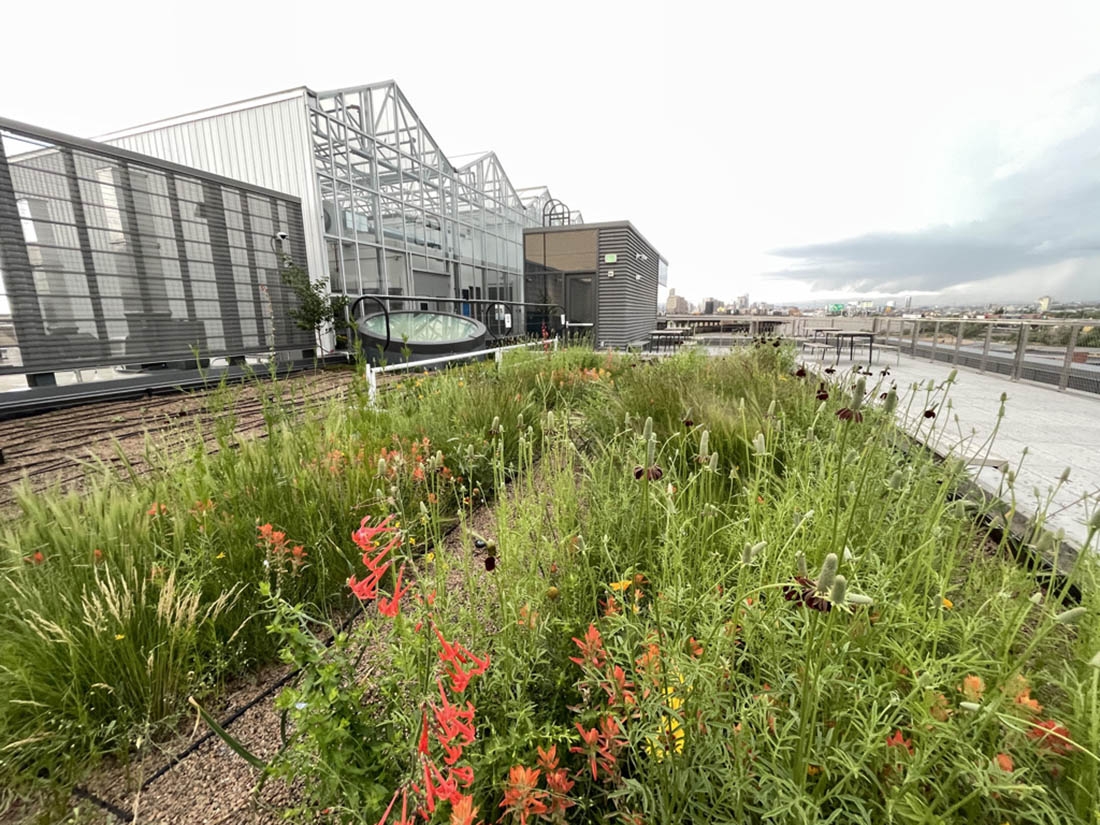Positive Impact of Green Roofs
Green roofs, also known as vegetated roofs or living roofs, are recognized as a sustainable strategy for urban development. These eco-friendly rooftops offer a multitude of environmental, economic and social benefits, making them a valuable addition to modern cityscapes.
Denver implemented its Green Building Ordinance in 2017, requiring adherence to environmentally sustainable standards for commercial and multifamily buildings over 25,000 square feet and for major renovations. These standards include green roofs or roofs with solar panels as an option for compliance. This forward-thinking policy encourages eco-friendly urban development and contributes to Denver's commitment to environmental responsibility, positioning the city as a leader in green building practices.
One of the most significant advantages of green roofs is their positive environmental impact. They act as natural insulators, reducing the energy consumption of buildings by moderating indoor temperatures. By absorbing carbon dioxide and filtering the air, vegetation on green roofs contributes to improved air quality and reduced greenhouse gas emissions. They also mitigate the urban heat-island effect, lowering ambient temperatures in densely populated areas. This is particularly important in a city like Denver, where average temperatures are up to five degrees warmer than surrounding rural and suburban areas.
Green roofs also play a crucial role in stormwater management. They absorb and clean rainwater, reducing the risk of flooding and preventing pollutants from reaching water bodies. This not only safeguards local water quality but also eases the burden on municipal sewage systems during heavy rainfall events. Adding precious green space also enhances biodiversity, providing habitats for birds, insects and other wildlife where they are typically scarce. The benefits of green roofs extend into the economic realm as well. By reducing energy costs through improved insulation and extending the lifespan of roofing materials, they save money for building owners in the long run, making them a sound investment.
Denver Botanic Gardens has been on the cutting-edge of green roof development in Denver. The York Street location has two publicly accessible green roof installations: a smaller green roof above Offshoots Café and Mordecai Children’s Garden, which is over the parking garage. These two green roofs have served as living laboratories, allowing Gardens’ staff and scientific collaborators to improve plant selection for vegetated roofs in Denver’s dry climate and better quantify their environmental benefits. Currently, staff are working to establish vegetation on green roofs through direct seeding, which is more cost-effective and results in more biodiverse plantings than industry-standard plant palettes. Other exciting work in Colorado is being pioneered by researchers at Colorado State University, who are leveraging the combined environmental benefits of green roofs and solar panels to grow crops on rooftops under a protective canopy of energy-generating panels, a practice known as rooftop agrivoltaics.
As cities such as Denver evolve, green roofs are becoming an increasingly vital component of a sustainable future. With the continued enthusiasm and backing of governments, cultural and academic institutions, Denver can remain a leader in this field.
This article first appeared in Life on Capitol Hill.
Gallery




Add new comment